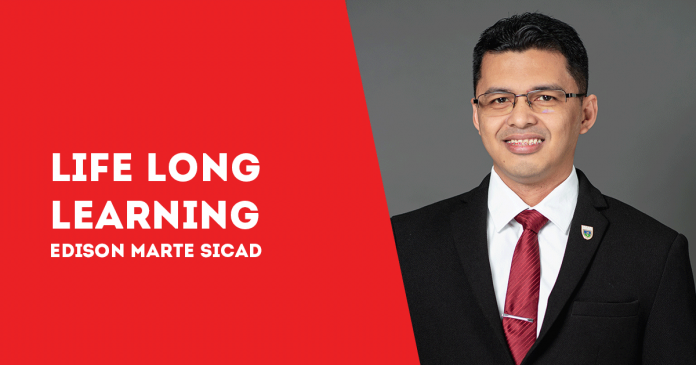
By EDISON MARTE SICAD
“However, the Art of Argumentation and Debate does not end with proving that I am right, and you are wrong. It continues with a path of understanding truth from different perspectives. As we hope that the best team wins, let us be more hopeful that we all win when we are on the side of truth.” — Prof. Eric Divinagracia, director, Student Affairs and Welfare Office, University of San Agustin (Opening Remarks, St. Augustine 2023 Debate Series)
AT THE outset, we have constitutional provisions and laws referring to abortion:
1. Article II, Section 12, of the 1987 Philippine Constitution supports the sanctity of family life as well as the equal protection of the life of the mother and the life of the unborn from conception.
2. On the other hand, the Revised Penal Code (RPC) of the Philippines punishes abortion:
* Art. 256. Intentional abortion.
* Art. 257. Unintentional abortion.
* Art. 258. Abortion practiced by the woman herself of by her parents.
* Art. 259. Abortion practiced by a physician or midwife and dispensing of abortives.
This would mean that legalizing abortion is unconstitutional; and the Affirmative side seems to be aiding and abetting the commission of a crime.
But during the match between the College of Pharmacy and Medical Technology (PMT) and the College of Liberal Arts, Sciences, and Education (CLASE), the Affirmative side (PMT) was declared as champion.
How were the debaters of PMT able to surmount the constitutionality and criminal aspects of the proposition?
We have to remember that this is an academic debate following the modified Oxford-Oregon format. It means that there are guidelines for both teams to follow to level the playing field, so to speak. Further, the Negative side cannot just depend on the 1987 Constitution and win by using the RPC to its advantage.
The speakers of the Negative side must clash and confront the arguments presented by the Affirmative side. The Negative side must apply the destroy-then-build approach: refute the arguments (or the prima facie) of the Affirmative side, then from the rubble, build its own foundation proving that the Negative side’s assertions are more logical, cohesive, and convincing.
So, if the Negative side cannot bank on the constitutionality and criminality of the issues to rally forth a credible charge, what arguments can it weaponize to repel and destroy the Affirmative’s attacks?
During the debate match, Republic Act 10354 or the Responsible Parenthood and Reproductive Health Law of 2012 (RH Law) was mentioned but was not given enough emphasis.
Since the RH Law, a national policy, mandates the Philippine government to comprehensively address the needs of Filipino citizens when it comes to responsible parenthood and reproductive health, this law can already address some concerns that the Affirmative side presented—to change the status quo.
This tactic might be stretching a bit the scope of the RH Law, but somehow, it can weaken the urgency of the Affirmative’s motion of legalizing abortion. In other words, the present system is self-correcting. There are already laws and mechanisms available that can address the problems pointed out by the Affirmative side. Therefore, there is no Necessity for such a proposition. Concern about safe medical procedures and unwanted pregnancies can be addressed without legalizing abortion.
The proposal of the Affirmative side is like opening Pandora’s box. Eventually, the value of the life of the unborn will be tied or dictated by financial or social stigma—or worse personal preference. Moreover, such procedure will become a matter-of-factly decision: like going to the dentist for tooth extraction.
For emphasis, what we prioritize here is the value and dignity of life—even the potential for life—regardless of the contributing factors that weigh heavily on the mother and other people concerned.
Further, the Affirmative side is sending an ominous message that is insidious in nature: a state-sponsored abortion can become institutionalized and can ripen into a human right. It is a rotten message that will surely stink somehow.
But in this debate, a team wins not entirely because of the weakness of the opposition’s arguments, but by the strength of one’s own. And this can become obvious during the Interpellation: the question-and-answer portion where a debater—by a series of questions—attempts to destroy the constructive speech of the other.
Eventually, the Art of Debating can be fully appreciated in seeing one and—even better—in becoming a debater. And the University of San Agustin has been consistent and exemplary in such an advocacy.
To clarify, issues in a debate match are mostly propositions of policy. This is to avoid being moralistic and didactic. Religious issues are also avoided for it tends to become personal and divisive—if not violent.
IN CONCLUSION, the purpose of Debate is for the Augustinians to be ever in search of and on the side of Truth. In the same manner, such activities develop the skills in public speaking, critical thinking, and teamwork.
Congratulations to the organizers and participants. To the coaches, debaters, parents, teachers and to all Augustinians, may we always put to heart the message of St. Augustine:
Let our searching be such that we can be sure of finding, and let our finding be such that we may go on searching. (De Trin.9.1,1)/PN



